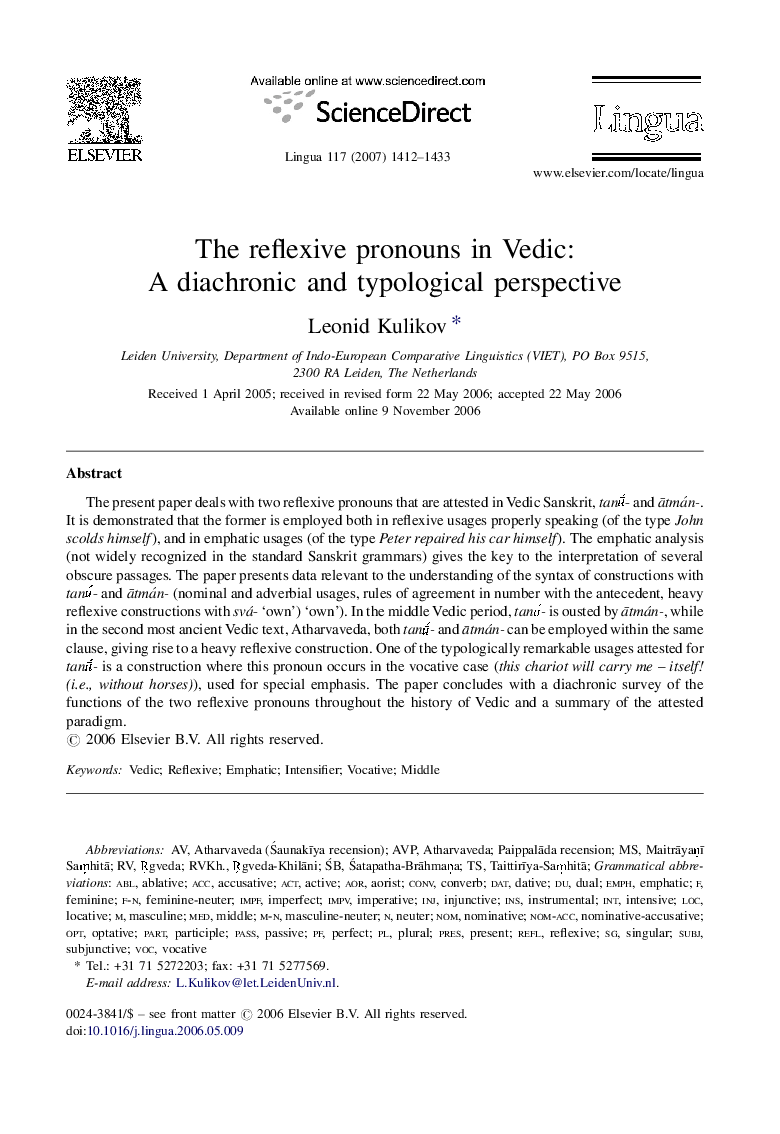| کد مقاله | کد نشریه | سال انتشار | مقاله انگلیسی | نسخه تمام متن |
|---|---|---|---|---|
| 936365 | 924025 | 2007 | 22 صفحه PDF | دانلود رایگان |

The present paper deals with two reflexive pronouns that are attested in Vedic Sanskrit, tan- and ātmán-. It is demonstrated that the former is employed both in reflexive usages properly speaking (of the type John scolds himself), and in emphatic usages (of the type Peter repaired his car himself). The emphatic analysis (not widely recognized in the standard Sanskrit grammars) gives the key to the interpretation of several obscure passages. The paper presents data relevant to the understanding of the syntax of constructions with tan- and ātmán- (nominal and adverbial usages, rules of agreement in number with the antecedent, heavy reflexive constructions with svá-‘own’). In the middle Vedic period, tan- is ousted by ātmán-, while in the second most ancient Vedic text, Atharvaveda, both tan- and ātmán- can be employed within the same clause, giving rise to a heavy reflexive construction. One of the typologically remarkable usages attested for tan- is a construction where this pronoun occurs in the vocative case (this chariot will carry me – itself! (i.e., without horses)), used for special emphasis. The paper concludes with a diachronic survey of the functions of the two reflexive pronouns throughout the history of Vedic and a summary of the attested paradigm.
Journal: Lingua - Volume 117, Issue 8, August 2007, Pages 1412-1433